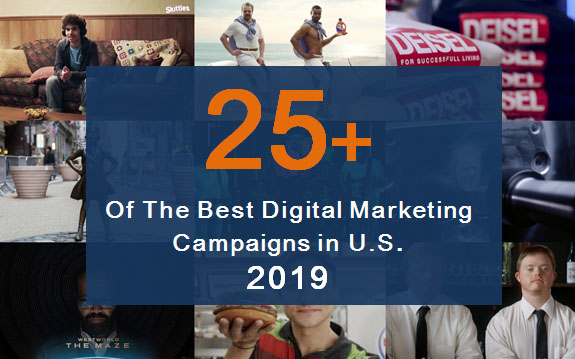The Best Landing Pages To Take Inspiration From
Web Design | Jun 26, 2023
As of January 2019, there were over 1.94 billion websites on the Internet which means there are probably a lot more landing pages than that.
Landing pages can look vastly different from one another and even though each brand may use different strategies to get their message across, they have the same goal: to generate leads and propel prospects further into the customer funnel.
Drawing customers into your website or landing page can seem like a difficult task, but trust us when we say that making them stay is the hard part.
According to a Taylor and Francis study, it takes around 0.05 seconds for users to decide whether they’ll stay or leave your website. Therefore knowing how best to design your landing page is of the utmost importance, especially if you’re using a platform like Facebook Ads or Google Ads.
To get you started, here are some examples of good and bad landing pages.

Image by Fathromi Ramdlon from Pixabay
Good Landing Pages:
1. AIRBNB
Overall Airbnb’s landing page is very effective. The ‘get started’ call-to-action at the top of the page is visible and encourages visitors to find out more. Incorporating customer testimonials are especially effective in this case and helps to establish trust between Airbnb and its potential customers.
Furthermore, to help convert readers into hosts, Airbnb personalizes individuals’ experiences by including an estimated weekly average earnings projection based on their location. The visitor can add extra information about their potential accommodations into the different categories and fields to further personalize their search.
2. SHOPIFY
Keeping in line with many of its pages, this Shopify trial landing page is simple yet effective. The page contains all the need-to-know information without it feeling too crowded. The short tagline ‘sell online with Shopify’ makes it clear to readers what the page is about. By including key benefits of the eCommerce company, organizations that Shopify work with, and a customer quote, Shopify can easily put their key message and USP (unique selling proposition) across, encouraging visitors to sign up and become a customer.
3. CANVA
As Canva is a simplified graphic-design tool website, it is very fitting that it has created a visually appealing home page with motion graphics and beautifully designed illustrations. The sign-up form only contains the key fields and users have the option of signing in with their social media or email accounts, making the sign-up process even easier and more convenient.
However, a possible weakness is that they haven’t included any copy detailing what the company does meaning that visitors will need to click through the page.
4. UBER
Similar to Canva, Uber’s sign-up page is another example of a good landing page. The green call-to-action button stands out from the rest of the page, illustrating to customers where to sign up and find out more information. The five form fields listed are appropriate for a sign-up page without asking for too much personal information.
Nevertheless, not including any copy could make visitors feel uncertain and under-informed of the service. Therefore, although Uber’s sign-up page is great and aesthetically pleasing, this could be a potential area that Uber could leverage to increase their page’s effectiveness.
5. H.BLOOM
What makes H.BLOOM’s landing page successful is mainly due to its visuals. The use of high-resolution photography and white space is a breath of fresh air. Aside from its beauty, H.BLOOM also has fantastic conversion elements such as clear call-to-action buttons and an above-the-fold form. This is a great way to convert mere website visitors into customers and grow one’s customer base.
Bad Landing Pages:
1. CRUISE
The main problem with Cruise is that the website feels too crowded. When you first view the page, there are too many headers and subheaders, meaning the visitor can get easily lost. There is also no key area to which the reader is drawn due to the fact there is too much going on on the page. Therefore a possible way to improve this is to have a clear structure and layout to your page. This will help guide readers through the page and help them to find information much quicker.
2. OFFICE FURNITURE
Put simply, this landing page is a good example of what not to do. The page has a lot of clutter and it feels as though the website designer wanted to put forward too many messages to the reader. Although it has a decent structure, there is too much content displayed. Thus, by adding some white space, imagery, or videos to the page, it will increase its readability and help to unclutter all the information.
3. PURA DATA MANAGEMENT
Although Pura Data Management has a nice structure and design to its website, one of its key downfalls is the amount of copy. Similarly to this, as there is a lot of copy on the website, the font size is quite small and could inconvenience some readers. Readers can easily be swayed over to other websites if they see too much text, therefore it is a good idea to break up text with images or highlight key phrases within the text so that the reader can easily skim their eyes through the information.
4. CHASE
The key takeaway from JP Morgan’s Chase website is to choose a single-user call-to-action. Currently, on their website, there are eight different calls to action from opening a new account to applying for a car loan. Having so many different call-to-actions makes it confusing for the user and could hinder your website from reaching your target objective. Therefore, make sure you have decided on what you want your website to achieve so that your call-to-action buttons are in line with this.
5. GROSVENOR HOUSE PUBLISHING LIMITED
It’s clear from the first glance that this web design is outdated. Its basic layout structure and heavy use of copy is unengaging and not visually appealing. With a lack of conversion elements such as a contact form, makes it hard for the company to engage with its visitors. Call-to-actions are important to a website and must be included to create a successful website.
Summary
As you can see from our examples, even some of the most successful companies can get their landing pages wrong. Before you go ahead, make sure you review what your competitors are doing or most importantly, what they’re not doing so you can attract more customers.
Warning: Undefined array key "sidebar_ads" in /home/dmc/public_html/wp-content/themes/DMC/functions/helpers.php on line 824






